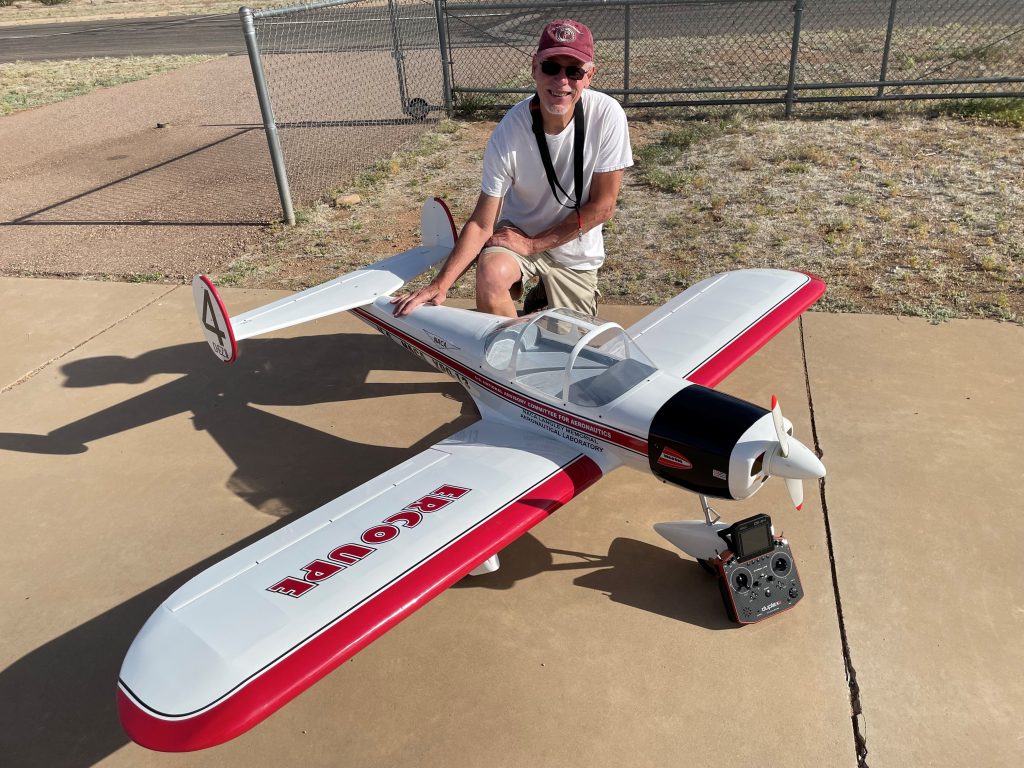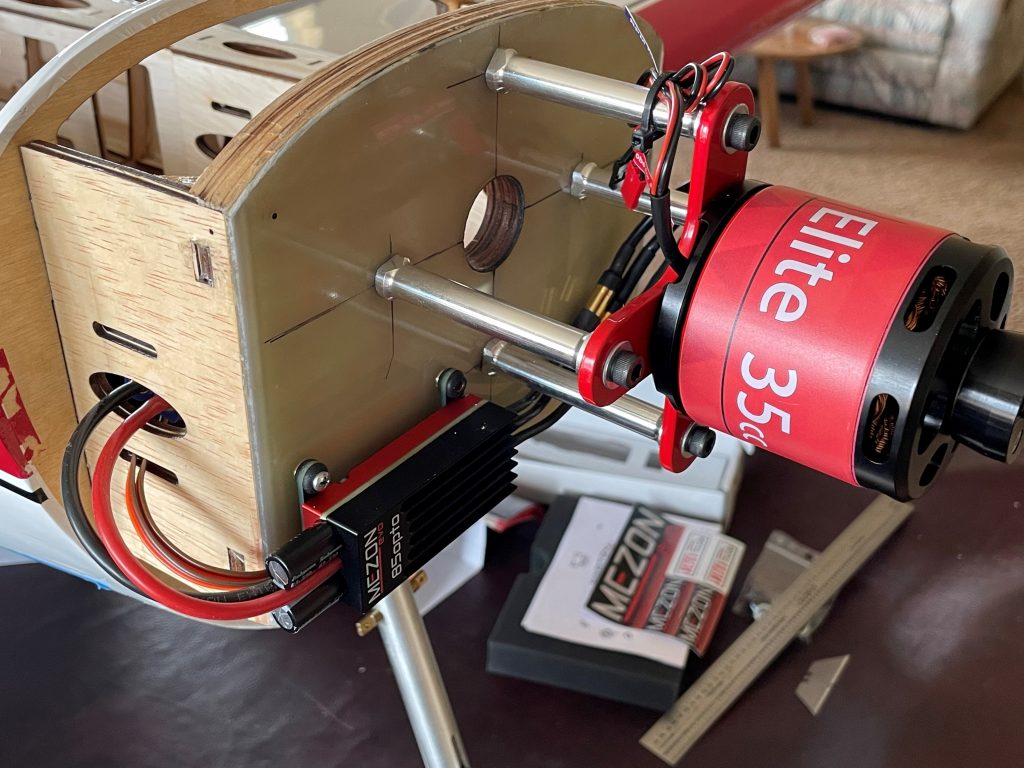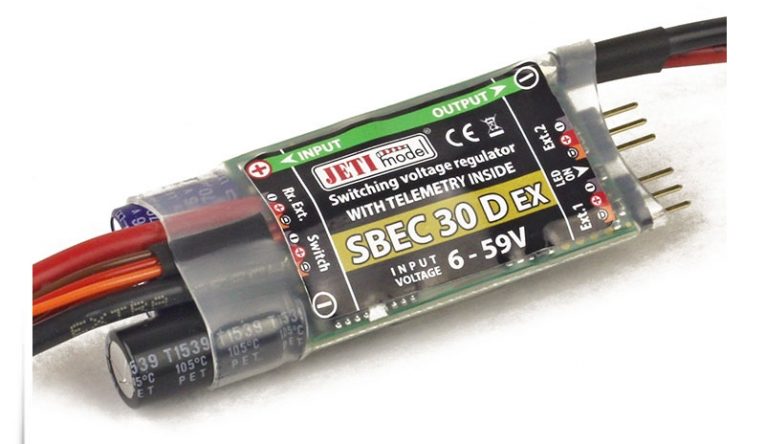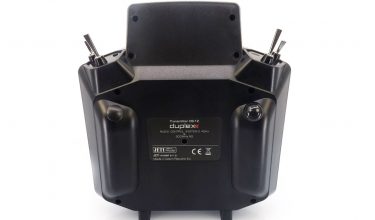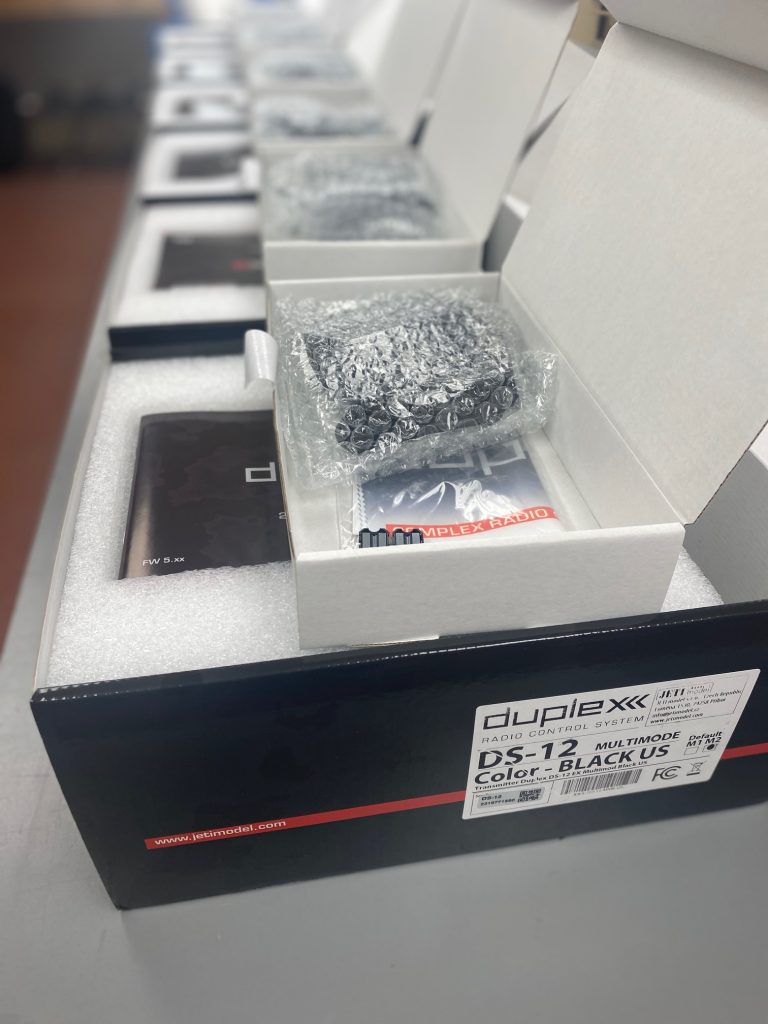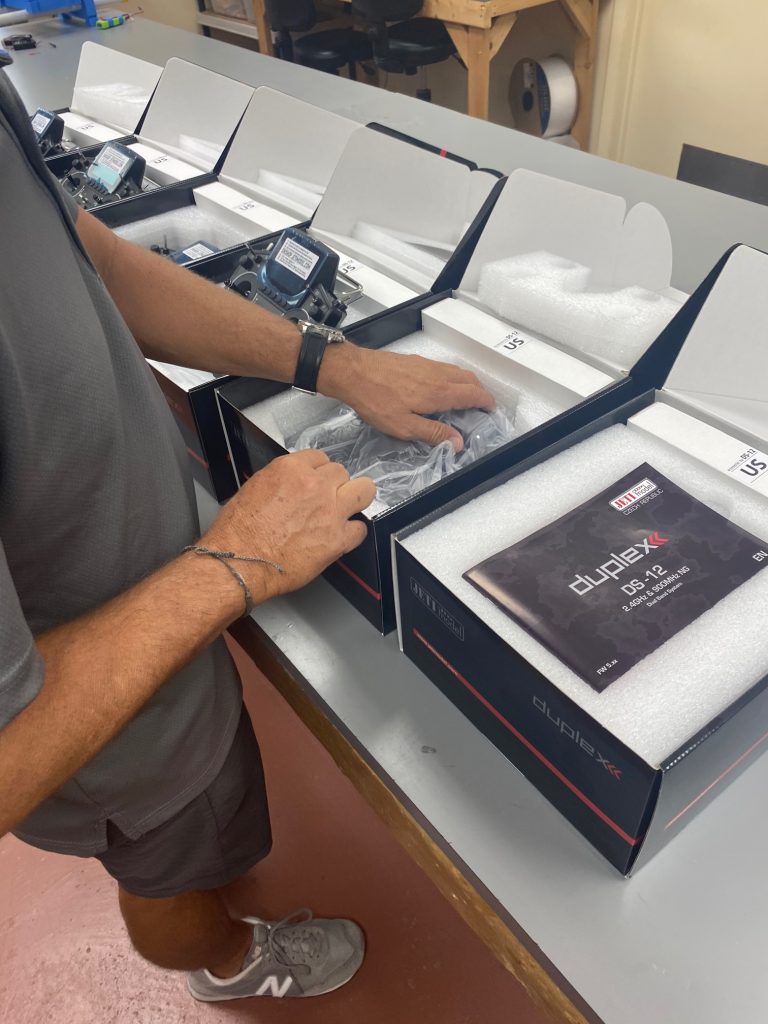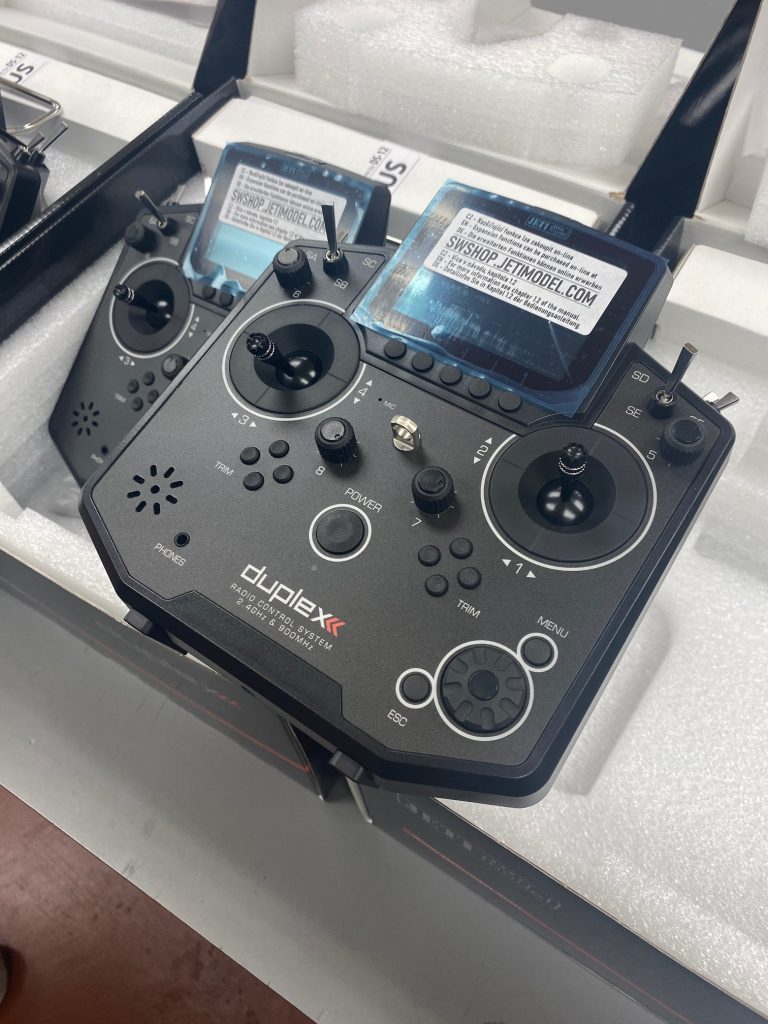New Options within Existing Feature
Logical Switches – But Wait, There’s more!
We just released a blurb about the Logical Switch feature in our Jeti Transmitters and we realized that the video failed to touch on some of the newer options within the Logical Switch programming.
If you were to look inside the transmitter manual, you will find (pg. 107) and explanation of the AND condition, the OR condition, and the MULTI condition. What you cannot find however is an explanation of the A↑ B↓ condition and the XOR condition, so we think posting it here would be beneficial.
XOR is a standard logic function. It’s a logical “exclusive OR” function. For two given logical statements, the XOR function would return TRUE if one of the statements is true and FALSE if both statements are true. If neither of the statements are true, it also returns FALSE (see table below).
A↑ B↓ (is already a complete function): switch A turns the function on and switch B resets it (off).
Logical Switches
A Brief Explanation
Sometimes in flying, you run into a situation when you might want, or need, a more specific set of controls from your transmitter. These situations can be as simple as applying an air brake when your throttle goes below a certain percentage, or more complex situations like if you were to want a remote canopy to open if and only if your airspeed was at zero and your landing gear was deployed. Many transmitters on the market today can provide these controls, however they are called by different names. With any Jeti Transmitter, this feature is known as “Logical Switches”. Logical switches allow you to get specific with mixing your controls and opens up a world of possibilities.
When programming a logical switch with a Jeti Transmitter, you can program any one of your many switches as well as employ the use of your proportional controls, levers, knobs, accelerometers, telemetry controls, and even timers. To program these, you will go to Menu > Advance Properties > Logical Switches. From here you will label your switch, enable it, and assign two controls and a condition (such as and, or, etc.,). Check out the video below where James takes you through the steps needed to use this great feature.
Please note that since the production of this video, Jeti Firmware updates have changed a few of the options found in logical switches.
Here is a great playlist from Harry Curzon that goes over logical switches in great detail.
Joe Nall 2023
It’s a Wrap!
As Joe Nall 2023 comes to an end, don’t forget to head on over to the Aeropanda booth and give them a shout! Even though we couldn’t make it this year, they should have some cool goodies to look at!

*Photo credit – Facebook.com/Stansphotos
Our Newest Team Members
We Grew by Two!
We have gained two new employees! Our unofficial company birds – a few Sandhill Cranes – have become parents to two more offspring. Welcome Pepe and Pipi! It is such a joy to come to work and see these little, fluffy guys (even though they won’t stay little for very long). The addition of these two, there are four other Sandhill Cranes living on/around the grounds. In about three months time, these colts will be several feet tall, and by eighteen months, they will have reached adult size.

Fail Safes – What and Why
The Importance of Fail Safes
We discussed last week how the 900mhz backup feature is a highly recommended, under utilized feature, but we also want to talk about another feature that gets overlooked. With Jeti, as with most systems, you have the ability to set up a fail safe on your receiver. Fail Safe is a feature that tells your aircraft what to do in the case of a communication loss. This is important, because a communication loss can be catastrophic and cause an aircraft to do unexpected things. When you lose control of your aircraft, people can get hurt, and all of us want to avoid that scenario. To prevent such a series of events, you can set up a fail safe to carry out a specific task, like turning off your motor, in case of a communication loss. While this seems like a natural thing to do, many pilots are so excited to get a new model finished, this step is often overlooked. It can be the difference between a minor scare and a really bad day. Don’t forget to test the failsafe before you get to the field as you want to make sure it is functioning before you need it.
Check out this video on how to set up your fail safe.
Congratulations Are In Order
World Wide Winners
With spring weather comes competitions – all over the world! Jeti USA would like to congratulate Andrea Cervi for his first win at the F3A Italian Championship. One down – two more to go! Andrea competed with the Jeti DS-24 and the Jeti Mezon Pro EVO series ESC.
Jeti team pilot Alex Tang also recently took home a win at the SCSA Open 2023 Spring competition. He competed in the F3K category and walked away with second place! Congratulations Alex!
Jeti USA is excited to see happy Jeti users all over the world. Keep flying guys! Congratulations to all the winners and best of luck this year!
*Photo Credit: Jeti Model (Facebook)








Benefits to Jeti’s 900MHz Backup
An Under-Utilized Gem
With so much flexibility in how to use your Jeti products, it is very easy to miss some really important features. One feature that we often see go under-utilized is the use of the 900 MHz backup on the transmitters.
The Jeti Duplex system is a highly reliable system of transmitters and receivers that send and receive data through the use of radio signals at a frequency of 2.4GHz. Due to the fact that the 2.4GHz frequency offers a decent way to transmit data long range, more and more devices now operate on 2.4GHz. Here is a brief list, just to give you an idea:
- Cordless phones (yes, these do still exist)
- Baby monitors
- Wi-Fi networks
- Bluetooth devices
- Garage openers
- Car alarms
- Microwaves
With all of those devices around you running on the same frequency it is very possible to face some issues beyond your control. Now, Jeti designed their products with many in fail-safes in mind; telemetry options to analyze signal strength and quality, dual antennas on our receivers to help with shielding issues, and even receiver redundancy in case of failure. These are all amazing features, and have helped save many aircraft, but where it doesn’t help is in the case radio frequency interference. That is where running the 900MHz backup comes into play.
With the use of dual frequency, if there is an issue in the 2.4GHz signal, the back up 900MHz will pick up and transmit necessary data – resulting in you, the pilot, maintaining control of your aircraft. We cannot stress enough how helpful this feature is. Utilizing the 900MHz backup can absolutely save your aircraft, and we feel that no matter how big or small, no airplane deserves to crash! Keep in mind, this is only a back-up, and typical use will be on the 2.4GHz frequency.
Jeti offers two different 900 MHz receivers, but each one has a very specific use. The R3 REX 900MHz is used for the DC-24 and DS-24 transmitters. The DS-12, DS-14 G2, and DS-16 G2 all utilize the “Next Gen” 900MHz receivers – the 900NG.
Check out our entire line of Jeti receivers here.
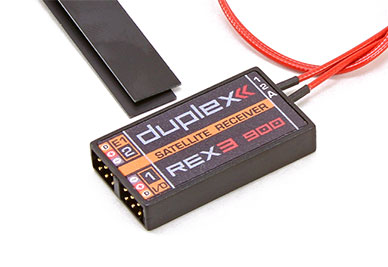

Sources:
Author Unknown. “List of 2.4 GHz Radio Use.” Scholarly Community Encyclopedia. (2023). Retrieved from URL https://encyclopedia.pub/entry/33343. (May, 2023).
Gizmodo. “Why Everything Wireless is 2.4 GHz.” Wired. (September, 2010). Retrieved from URL https://www.wired.com/2010/09/wireless-explainer/. (May, 2023).
Our Next Build?
Something New Is Brewing
Now that the OV-10 Bronco build is complete, it is time to start something else. What do you think of a little TopModel CZ, Jetec, and Jeti action? We are thinking of installing the Jetec Sailplane power launching system into our TopModel ASH 31 Mi Scale Sailplane… and of course we will be running Jeti!





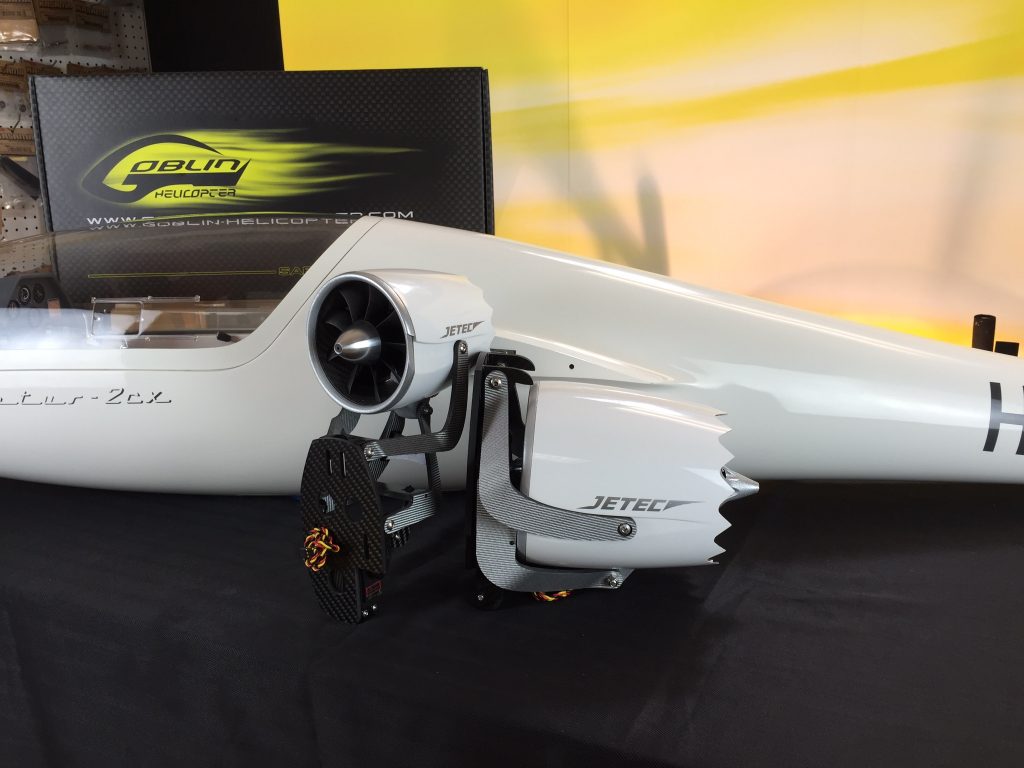
John’s Seagull Models Ercoupe
Another Awesome Maiden Flight!
Jeti user John D. got to maiden his Seagull Models Ercoupe last weekend, and by all reports it flew great!
The Ercoupe model is built with balsa and plywood, allowing it to be sturdy and light. It has a wingspan of over eight feet and is over five feet long! On this particular model, John is running a REX12 Assist receiver, 900mHz backup receiver and R3/RSW double path redundancy, an Elite 35cc electric motor, Mezon EVO 85HV ESC, 12s battery set up, Fiala 20×8 prop and Promodeler servos.
Check out his photos below!
